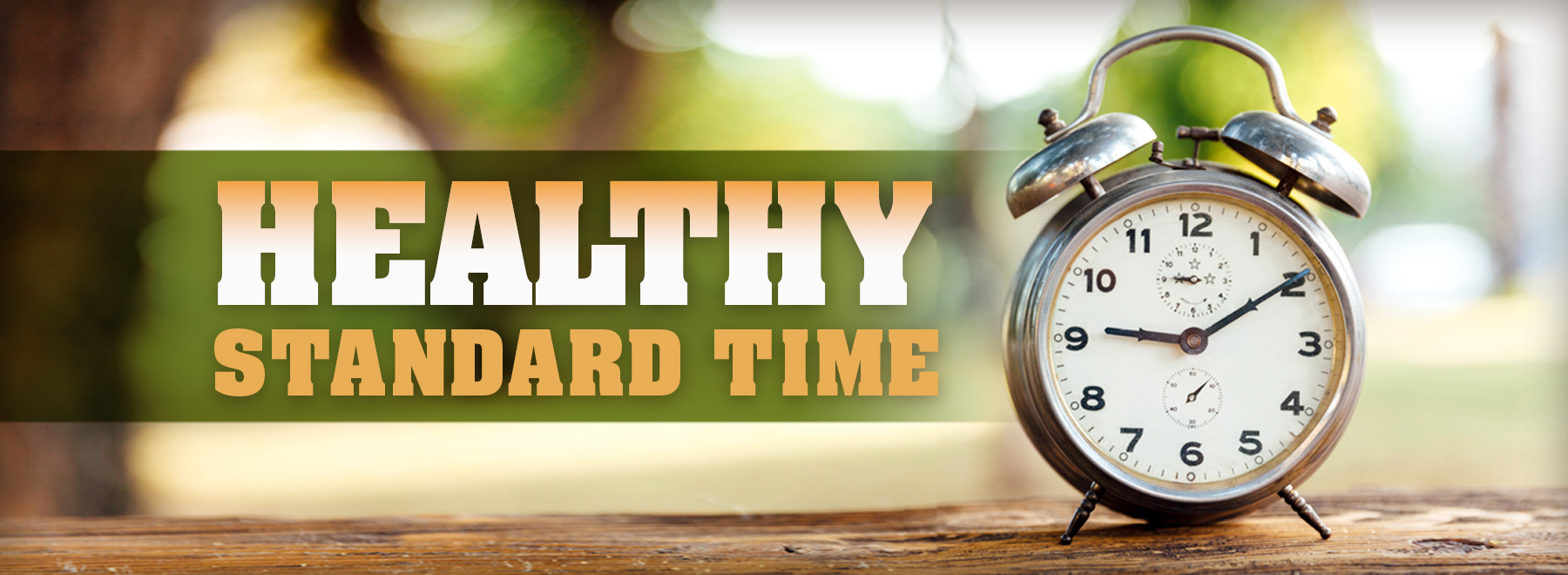Why universal Daylight Saving could improve your well-being
Spring forward. Fall back.
It’s a familiar seasonal ritual to most Americans - and of late, one of the most controversial.
According to the National Conference of State Legislatures, since 2015, more than 200 pieces of legislation have been introduced across almost every state to abolish the back-and-forth nature of the national time change. Only an act of Congress could actually accomplish the feat.
But could the semiannual changing of the clock actually be harmful to Americans’ health?

Because our “body clocks” are conditioned to keep track of the time, Dr. Andrea Lewis, associate professor of otolaryngology and head and neck surgery at the University of Mississippi Medical Center, said adjusting to a time change could, indeed, have negative consequences.
“Desynchronization of this process, known as our circadian rhythm, has been shown to lead to difficulty with our behavioral, cognitive and metabolic function,” Lewis said. “The CLOCK gene is designed to carefully monitor this process, and it is a very detailed process with even our body temperature decreasing when it is time for bed and rising in the morning.”

Dr. Chester Shermer, UMMC professor of emergency medicine, said setting the clock forward 60 minutes in the spring does much more than cause the loss of an hour’s sleep.
“Similar to jetlag, the body has a tough time adapting to sudden change,” Shermer said. “Even though the time change only happens twice a year, anything that upsets our circadian rhythm puts a stress on our bodies, prompting release of substances that can affect our blood pressure, heart rate, brain activity, etc.”
With so many health ramifications at stake, why do we change the clock at all?
According to www.timeanddate.com, to make better use of daylight and conserve energy, residents of Port Arthur, Ontario, turned their clocks forward on July 1, 1908, to start the world’s first Daylight Saving Time period. While other Canadian cities followed the trend, it wasn’t implemented on a national scale until April 30, 1916, when, to save fuel for the war effort by minimizing artificial lighting, clocks were moved ahead nationwide . . . in Germany and Austria.
Weeks later, the United Kingdom, France and many other countries implemented DST, but most of them reverted to standard time after World War I ended. Clocks were first moved ahead an hour in the U.S. in 1918, but “Fast Time,” as DST was called then, was repealed seven months later, although some cities continued using it.
During World War II, President Franklin D. Roosevelt instituted year-round DST in the U.S. on Feb. 9, 1942. Referred to as “War Time,” DST remained in affect nationally through Sept. 30. 1945. After that, no uniform rules existed for DST in the U.S. until the Uniform Time Act of 1966 was passed by Congress.
DST in the U.S. begins on the second Sunday in March and ends on the first Sunday in November, although under the Energy Policy Act of 2005, states can opt out of DST. Therefore, residents of Hawaii, the U.S. dependencies and most of Arizona don’t touch their clocks at all - and never have to artificially “catch up” on their sleep.
“With the start of Daylight Saving Time, nearly all Americans get less sleep,” Lewis said. “Our society is already chronically sleep deprived, and sleep is essential. Insufficient sleep is linked to a number of health problems, including weakened immunity, high blood pressure, memory issues, mental and mood instability, and increased risk of diabetes.
“States that have proposed legislation to stay with one time period have cited research which clearly shows there is an increase in health risks, including heart attacks, depression, car accidents and even cancer occurring twice a year when the time changes.
“This is particularly evident the morning following Daylight Saving Time, when sleepy driving is directly linked to more motor vehicle accidents. Stroke rates increase eight percent in the first couple of days following time changes.”
Shermer said he has evaluated a wide range of conditions in patients at UMMC’s Emergency Department that stem from changing the time.
“Excessive sleepiness, reduced reaction times, behavioral disturbances such as depression and suicide, as well as heart attacks, have all been associated with changes in time,” he said.
Lewis said she personally noticed a difference during the switch to DST last month.
“My own family was traveling to an eastern time zone during the recent time change, so we ‘lost’ two hours on our way out of town while trying to make it to our destination on time,” she said. “It negatively affected the mood of my children - and my husband and I - for a few days of our trip while we attempted to ‘catch up’ on sleep.”
The negative health ramifications of switching back and forth from standard time to DST are evident, but if the country were to move to a uniform schedule, which time would be the healthiest to adopt?
“If we chose one time - and stuck to it - Daylight Saving Time would be the best for us,” Shermer said. “The longer daylight hours provide more time for outdoor activities and exercise, getting most of us out of our sedentary lifestyles. Also, more human activity during daylight reduces traffic accidents and robberies. Once we have accommodated, the extra time in daylight would encourage safe, healthy behavior.
“As an emergency medicine physician, my patients would likely benefit from decreased accidents, depression and heart attacks. Of course, I would never see them if they weren’t having emergencies!”
On the other hand, Lewis noted year-round DST implementation would push daylight back in the winter, leading to later nocturnal habits and, ultimately, less sleep.
“Permanent Daylight Saving Time would be similar to living in a western time zone, which has been associated with an increased risk of cancer,” she said. “Though the exact link is unclear, it is thought that the circadian rhythm changes may be related to this increased risk.
“Standard time has been shown to give more opportunity for sleep, which has many positive health effects.”
Until a permanent time schedule is adopted nationwide, Lewis suggests the following strategies to adjust to the biannual clock fluctuation:
Plan ahead by going to bed 30 minutes earlier than your usual bedtime a few days before the time change.
Put away your phone or computer at least an hour before bedtime.
Keep a bedtime routine and avoid long naps.
Expose yourself to bright light in the morning, which will help you get to bed earlier.
Avoid drinking coffee six hour before bedtime and avoid drinking alcohol in the evenings - both can interfere with sleep.
Many in Congress hope to render these suggestions moot. The Sunshine Protection Act of 2021, introduced in the U.S. Senate, would make Daylight Saving Time the new, permanent standard time.“It has bipartisan support and may pass,” Shermer said. “As a long-time night shift worker, it would be nice to have a lot of daylight left after I awaken from sleeping during the day.”
Whether standard time or DST, adopting a universal, non-fluctuating time is in everyone’s best health interests, according to Lewis.
“There is clearly a growing body of evidence that ‘spring forward’ and ‘fall back’ is not the best choice for a healthy lifestyle,” she said.
The above article appears in CONSULT, UMMC’s monthly e-newsletter sharing news about cutting-edge clinical and health science education advances and innovative biomedical research at the Medical Center and giving you tips and suggestions on how you and the people you love can live a healthier life. Click here and enter your email address to receive CONSULT free of charge. You may cancel at any time.



